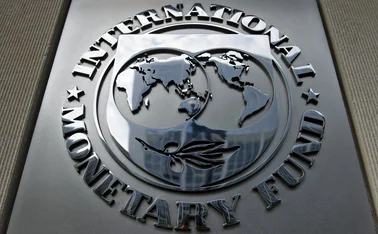
Promoting Chinese growth through technology
Ma Weihua explains why the time is ripe for innovation

The current slowdown in Chinese economic growth represents an opportunity for the country to shift from a growth model based on cheap labour and long working hours to an innovation-driven one. It is particularly noteworthy that innovation leads the list of the five major concepts highlighted in China's Thirteenth Five-Year Plan. It is vital to improve the quality of GDP growth through technological innovation as low quality growth does not generate competitive advantage.
In recent years, the Chinese government has already stepped up efforts to promote technological innovation by encouraging the whole society to unleash its creativity through "mass entrepreneurship and innovation".
Innovation in China is, however, not without its challenges, the biggest of which is financing. Chinese SMEs, especially high growth ones in the technology sector, are daunted by difficult, expensive financing options. Compared with their US counterparts, Chinese SMEs receive far less financial support. Starting out small, American companies like Microsoft, Yahoo and Cisco would not be as successful as they are without venture capitalists and lenders from Wall Street and Silicon Valley. By comparison, traditionally it has been difficult for high growth technology companies in China to borrow from banks because their intellectual property is not eligible collateral for loans under China's stringent commercial banking law.
New measures to support high-tech SMEs
High growth technology SMEs are the most motivated of all businesses to pursue innovation and embrace technology and thus have an important bearing on China's high quality future growth. Nowadays, both the government and banks are making efforts to provide more support to China's SMEs, especially high growth ones in the technology sector.
The Ministry of Science and Technology no longer funnels funding through layers of government to growth companies. Instead, it now partners with well-established, qualified private funds. Under such partnerships, sub-funds are created and investment is shared between private capital and public finance at a 70:30 ratio. To engage private capital, the partnerships are structured in such a way that the government stops receiving dividends on exit from its sub-fund. In addition, the State Council has convened a number of meetings to encourage banks to support SMEs by providing capital reserves, loan-to-deposit ratios and even loan guarantee services.
Banks themselves have developed many financial products targeted at SMEs and growth companies. For instance, China Merchants Bank (CMB) launched its ‘eagle' program, in which a list of high growth technology SMEs is selected from the existing clients of CMB and then referred to private equity (PE) funds for further selection, evaluation and investment. The screening by PE funds is essentially a risk assessment process. CMB then fulfils the remaining financial needs by providing the loan. For even better risk control, banks can offer financial counselling to SMEs as they prepare to become listed companies. With a combination of investment and lending, CMB has supported nearly 10,000 high growth technology SMEs.
Ways to support high-tech SMEs
China could focus on the following four aspects to support high growth technology SMEs.
- Fostering and developing a financial service system to boost technological innovation: a) Support bank lending and implement differentiated regulation, reserves and taxation policies; b) enhance capital market support so that capital would be more accessible to technology SMEs, with, for example, relaxed Growth Enterprise Market listing requirements; c) encourage lender-investor cooperation between commercial banks and PE funds; d) form a well-functioning equity investment mechanism to leverage venture capital, risk capital, the National Guiding Fund for the Conversion of Scientific and Technological Achievements, and other resources; and e) establish small and medium-sized, privately-owned technology banks following the model of Silicon Valley Bank.
- Perfecting the loan guarantee system for technology SMEs: Establish a variety of loan guarantee companies that meet the needs of different sectors that provide services to technology SMEs, help banks to develop innovative credit products and grant more technology companies access to loan financing.
- Establishing a business credit information network accessible by the whole financial system: China could create a business credit database of technology SMEs by combining the existing Bank Credit Registration and Consultation System with the credit information from the Ministry of Science and Technology, the Ministry of Industry and Information Technology, the State Administration of Taxation, the General Administration of Customs, and other government agencies. Meanwhile, establishing a credit rating system for technology SMEs would also be beneficial.
- Forming a counselling system for technology SMEs: It would be advisable to form a counselling system for technology SMEs. With local governments playing a leading role and cooperation from commercial banks and other relevant stakeholders, a counselling system for technology SMEs would offer an inclusive package of advisory services in financing, management, marketing, and other related areas.
Only users who have a paid subscription or are part of a corporate subscription are able to print or copy content.
To access these options, along with all other subscription benefits, please contact info@centralbanking.com or view our subscription options here: http://subscriptions.centralbanking.com/subscribe
You are currently unable to print this content. Please contact info@centralbanking.com to find out more.
You are currently unable to copy this content. Please contact info@centralbanking.com to find out more.
Copyright Infopro Digital Limited. All rights reserved.
You may share this content using our article tools. Printing this content is for the sole use of the Authorised User (named subscriber), as outlined in our terms and conditions - https://www.infopro-insight.com/terms-conditions/insight-subscriptions/
If you would like to purchase additional rights please email info@centralbanking.com
Copyright Infopro Digital Limited. All rights reserved.
You may share this content using our article tools. Copying this content is for the sole use of the Authorised User (named subscriber), as outlined in our terms and conditions - https://www.infopro-insight.com/terms-conditions/insight-subscriptions/
If you would like to purchase additional rights please email info@centralbanking.com
Most read
- ECB says iPhone is currently incompatible with digital euro
- Supervisors grapple with the smaller bank dilemma
- Central bank of the year: Central Bank of Brazil








